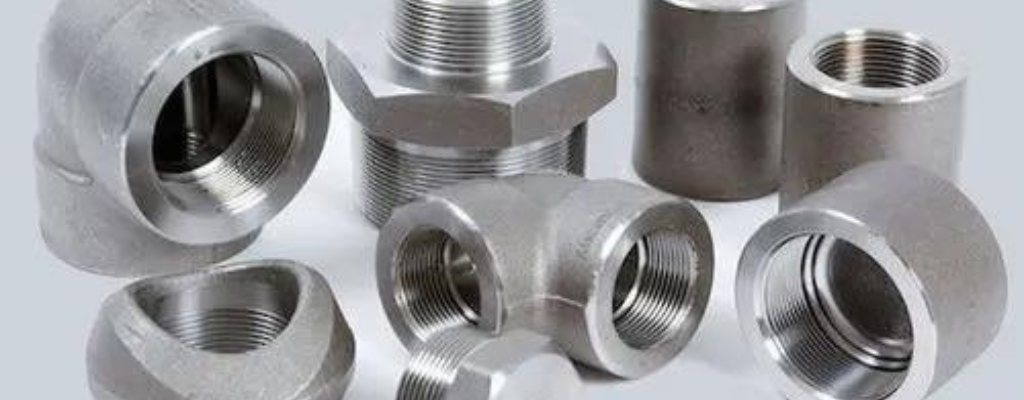
Stainless Steel 304 Pipe Fittings are essential components in piping systems renowned for their versatility, corrosion resistance, and durability. Composed primarily of chromium and nickel, Stainless Steel 304 exhibits outstanding resistance to corrosion and oxidation in a wide range of environments, including acidic, alkaline, and chloride-rich conditions. These fittings are widely used across industries such as chemical processing, food and beverage, pharmaceuticals, and plumbing systems. With excellent weldability and formability, Stainless Steel 304 Pipe Fittings offer ease of installation and maintenance, making them a preferred choice for various applications where reliability and longevity are paramount. Whether for connecting, terminating, controlling, or diverting flow, these fittings ensure robust performance and longevity in diverse operating conditions, making them indispensable in modern piping infrastructure.
Specifications for Stainless Steel 304 Pipe Fittings
| Property | Specification |
|---|---|
| Material Grade | Stainless Steel 304 |
| Standard | ASTM A403, ASME SA403, ASTM A182, ASME SA182, ASTM A276, ASME SA276, ASTM A479, ASME SA479, ASTM A182 F304, ASME SA182 F304, ASTM A240, ASME SA240 |
| Size Range | 1/2″ to 48″ (DN15-DN1200) |
| Types | Elbow, Tee, Reducer, Coupling, Union, Cross, Cap, Plug, Bushing, Nipple, Stub End, etc. |
| Pressure Ratings | Class 150, Class 300, Class 600, Class 900, Class 1500, Class 2500, PN6, PN10, PN16, PN25, PN40, PN64, PN100, PN160, PN250, PN320, PN400 |
| End Connections | Butt Weld, Socket Weld, Threaded, Flanged |
| Schedule | Sch 5S, Sch 10S, Sch 40S, Sch 80S, Sch 160, Sch XXS |
| Manufacturing Standards | MSS SP-43, MSS SP-79, MSS SP-83, MSS SP-95, MSS SP-97, BS 3799, ASME B16.9, ASME B16.11, ASME B16.28, ASME B16.25, ASME B16.5, ASME B16.47, DIN 2605, DIN 2615, DIN 2616, DIN 2617, EN 10253-4, EN 10253-2, EN 10253-1, EN 10253-3, EN 10241, EN 10242 |
| Surface Finish | Pickled, Passivated, Polished, Electro-Polished, Sandblasted |
| Applications | Chemical Processing, Food and Beverage, Pharmaceutical, Petrochemical, Oil and Gas, Plumbing Systems, HVAC, Water Treatment, Construction, etc. |
Uses of Stainless Steel 304 Pipe Fittings
1. Chemical Processing: Employed in chemical processing plants for connecting piping systems handling various corrosive chemicals and solvents.2. Food and Beverage Industry: Utilized for hygienic fluid transfer and processing in food and beverage manufacturing facilities due to their corrosion resistance and ease of cleaning.
3. Pharmaceuticals: Integral for pharmaceutical production processes, ensuring the safe and sanitary transfer of pharmaceutical ingredients and products.
4. Petrochemical Sector: Used in refineries and petrochemical plants for connecting pipelines and controlling the flow of petroleum products and chemicals.
5. Oil and Gas Industry: Employed in upstream, midstream, and downstream operations for connecting pipelines, manifolds, and valves in oil and gas production, refining, and distribution.
6. Plumbing Systems: Essential components in plumbing systems for residential, commercial, and industrial buildings, ensuring reliable fluid conveyance and control.
7. HVAC (Heating, Ventilation, and Air Conditioning): Used in HVAC systems for connecting ductwork, pipes, and components, ensuring efficient and reliable operation of heating and cooling systems.
8. Water Treatment: Employed in water treatment plants for connecting piping systems handling treated water, chemicals, and wastewater, ensuring corrosion resistance and longevity.
9. Construction: Utilized in construction projects for plumbing and fluid conveyance applications in buildings, infrastructure, and industrial facilities.
10.Shipbuilding: Used in marine applications for connecting piping systems on ships and offshore platforms, withstanding exposure to saltwater and harsh marine environments.
11.Power Generation: Employed in power plants for connecting piping systems handling steam, water, and other fluids in boiler systems, turbines, and condensers.
12.General Industrial Applications: Widely used across various industries for connecting pipes, valves, and equipment in fluid handling systems, offering durability and reliability.













